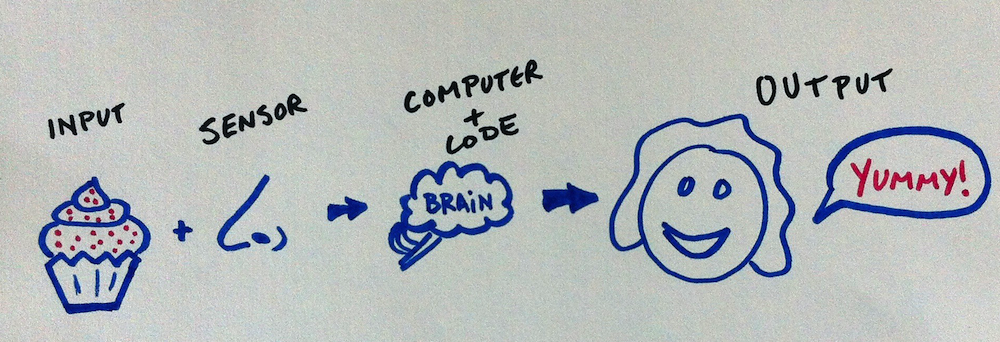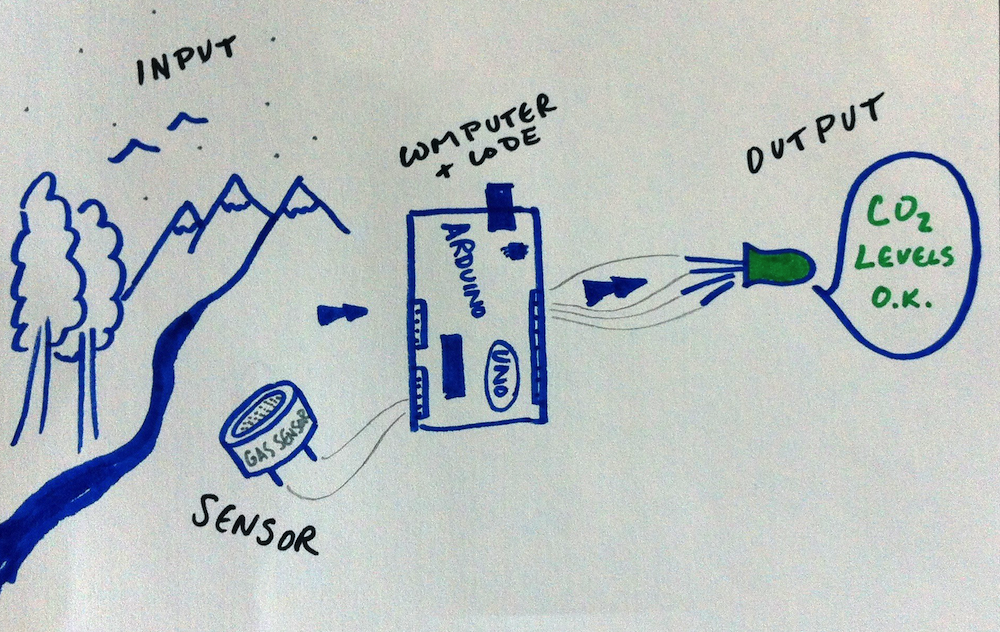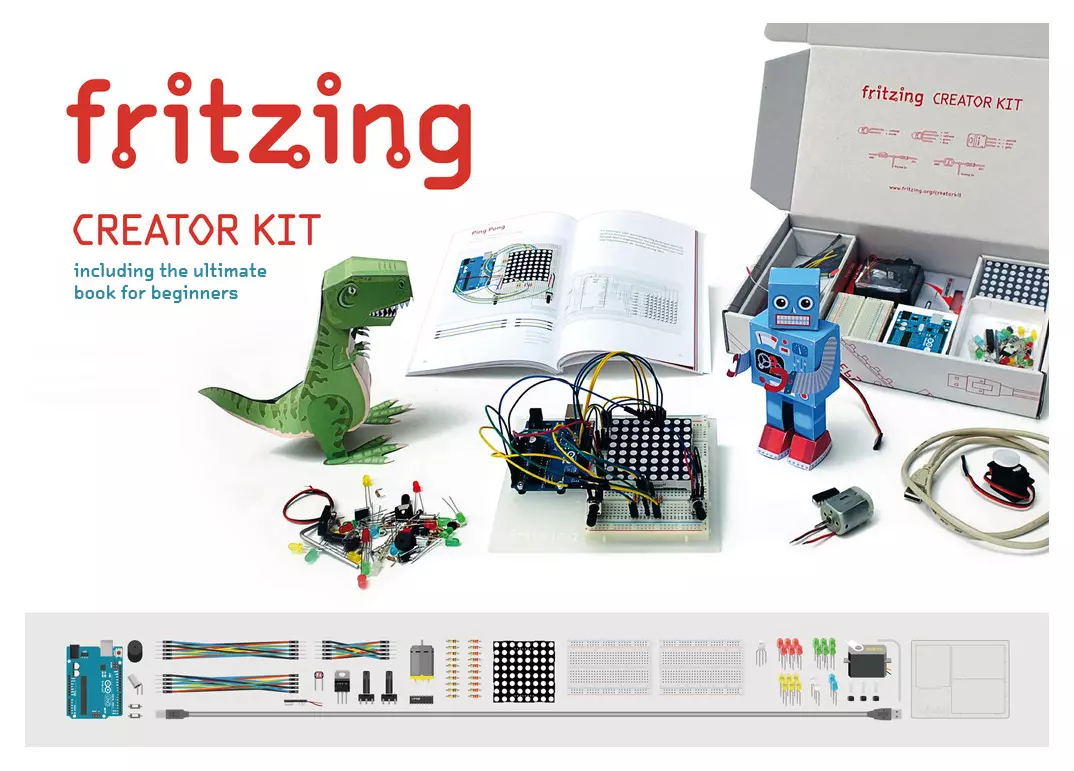 The Fritzing Creator Kit is out of stock for a long time. But when we reorganized Fritzing last year,
we found several of the original Fritzing Creator Kits deep in the basement underneath the old Kreuzberg office.
The kits are complete, with a nice colored book, and either an Arduino Mega or the Arduino Ethernet.
Kaya is selling them via eBay: Fritzing Creator Kit Mega and
Fritzing Creator Kit Ethernet.
If you recently paid for our download and build service, please ask her for a discount for the Creator Kit. Unfortunately, shipping is limited to the EU.
The Fritzing Creator Kit is out of stock for a long time. But when we reorganized Fritzing last year,
we found several of the original Fritzing Creator Kits deep in the basement underneath the old Kreuzberg office.
The kits are complete, with a nice colored book, and either an Arduino Mega or the Arduino Ethernet.
Kaya is selling them via eBay: Fritzing Creator Kit Mega and
Fritzing Creator Kit Ethernet.
If you recently paid for our download and build service, please ask her for a discount for the Creator Kit. Unfortunately, shipping is limited to the EU.
We found some creator kits
It's Fritzmas! New Fritzing "Code View" release, and a little present
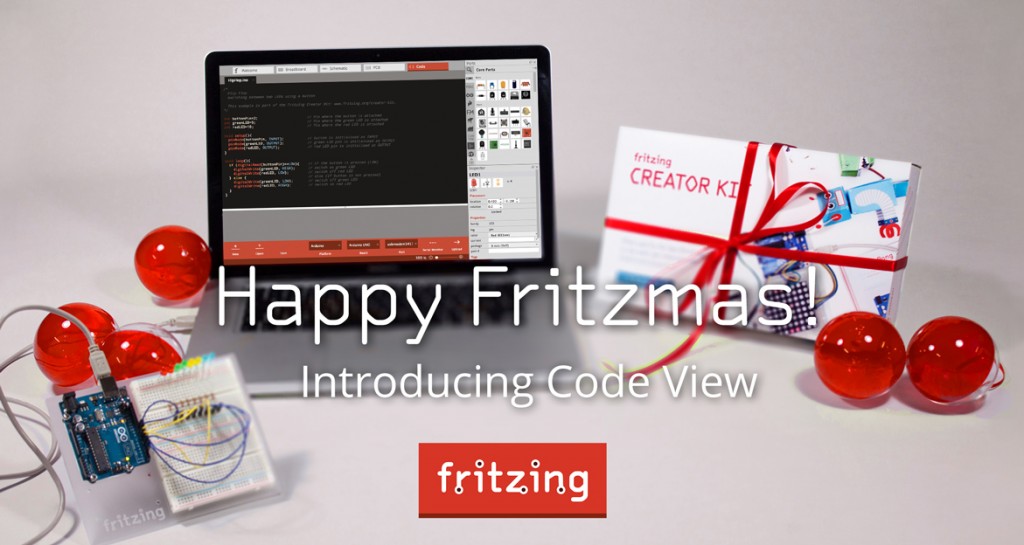
Dear Friends of Fritzing!
It's the time of the year again and we are happy to announce a new release featuring a brand new "Code View" that allows you to program and upload to your microcontroller straight from Fritzing. To celebrate this, we give you a nice discount on the perfect christmas gift, the Fritzing Creator Kit. Use the discount code FRITZMAS14 to get the kit for 89€ (instead of 95€) and make someone (or yourself) really happy this year. :) Read more on the release below.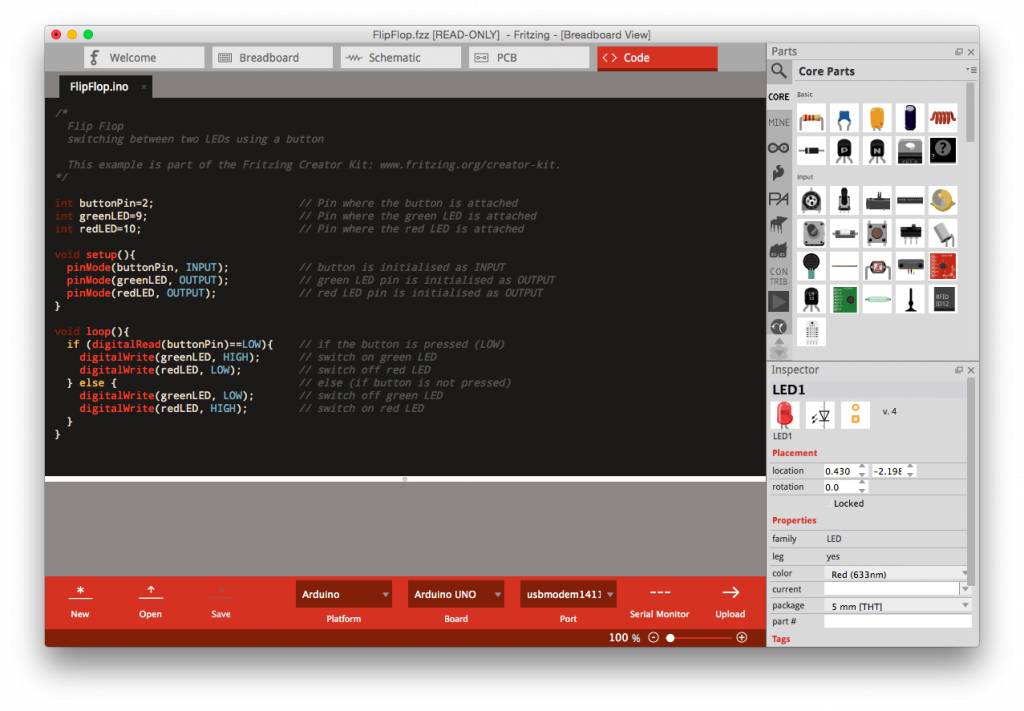
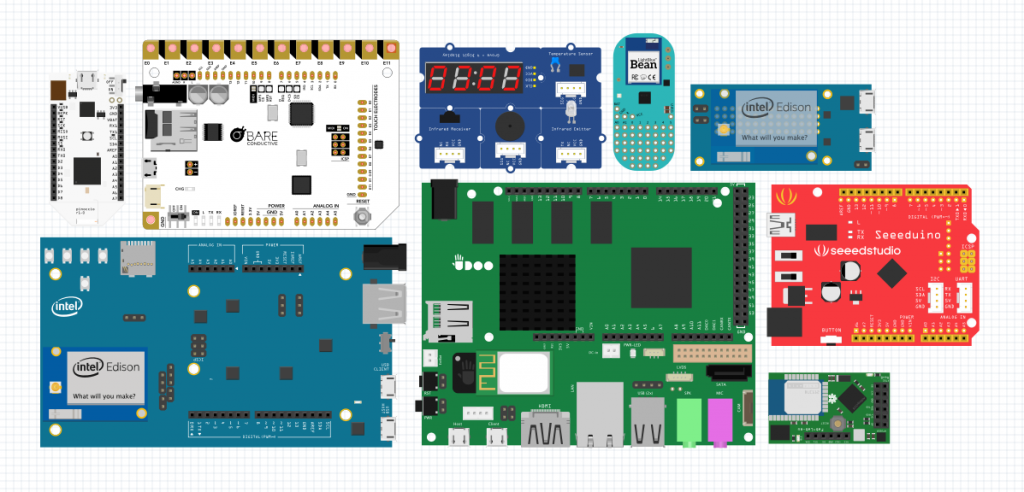
- Seeeduino, Grove, and more, thanks to SeeedStudio
- Intel Galileo Gen 2, Edison, and more, supported by Intel Software
- Raspberry Pi B+ and RPi Hat template
- Pinocc.io Scout, Backpack supported by Pinocc.io
- LightBlue Bean, supported by Punchthrough
- UDOO Duo/Quad, supported by Udoo
- Touch Board, supported by Bare Conductive
- blueIOT, thanks to Guido Burger
- More SparkFun parts, thanks to SparkFun
Das Fritzing Creator Kit im Schulunterricht
Liebe MINT-Lehrer und -Lehrerinnen,
mit dem Fritzing Creator Kit auf Basis von Arduino haben wir ein Lernpaket entwickelt, das Schülern auf projektorientierte, unterhaltsame und motivierende Weise das Programmieren näher bringt. Fritzing ist eine Open Source-Initiative, die interaktive Elektronik als kreatives Material für jedermann nutzbar macht. Mit über 200.000 Nutzern hat sich die freie Fritzing-Software als Standard-Werkzeug im Kontext von Arduino und Raspberry Pit etabliert. Mit diesem Rundschreiben möchten wir die Vorzüge der Fritzing-Umgebung im Schulunterricht kurz für Sie zusammenfassen.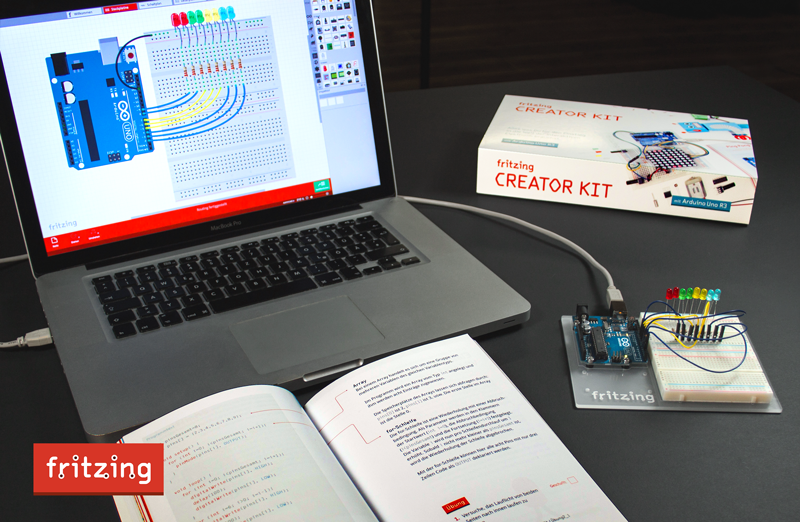
5 Gründe für das Creator Kit
1. Der spannendste Weg, Programmieren zu lernen
Eine simple Programmiersprache, aber mit großem Effekt: Mit dem Creator Kit lassen sich LEDs zum Leuchten bringen, Motoren steuern und die Umwelt wahrnehmen. So werden if/then & co. begreifbar gemacht.2. Entwickelt zusammen mit Lehrern und Schülern
Das beiliegende 144-seitige Buch führt die Schüler durch aufeinander aufbauende Beispielprojekte, die durch kleine Aufgaben und Theorie-Einschübe ergänzt werden. Die Verpackung ist robust und taugt für den Schulalltag.3. Eine populäre, offene Plattform
Mit Arduino setzt das Kit auf eine weit verbreitete Plattform, zu der man online wie auch in der Bibliothek viel weiterführende Unterstützung findet. Die Fritzing-Software bietet mit ihren anschaulichen Darstellungen zu Code und Schaltplan eine integrierte Lehr- & Lernumgebung.4. Umfangreiche ergänzende Lehrmaterialien
Neben dem Buch und den unterhaltsamen Bastelfiguren gibt es zu dem Kit eine 22-teilige Videoserie, die durch alle Inhalte führt. Darüber hinaus erhalten Lehrer eine Bildschirm-Präsentation, die sie im Unterricht für die Lehre verwenden können.5. Ansprechende Gestaltung
Das Erscheinungsbild trägt sehr dazu bei, dass das Kit bei den Schülern akzeptiert wird. Die freundliche Ansprache und liebevolle Gestaltung von Dino, Roboter und Wahrsager hilft auch technisch weniger interessierten über die Hemmschwelle hinweg.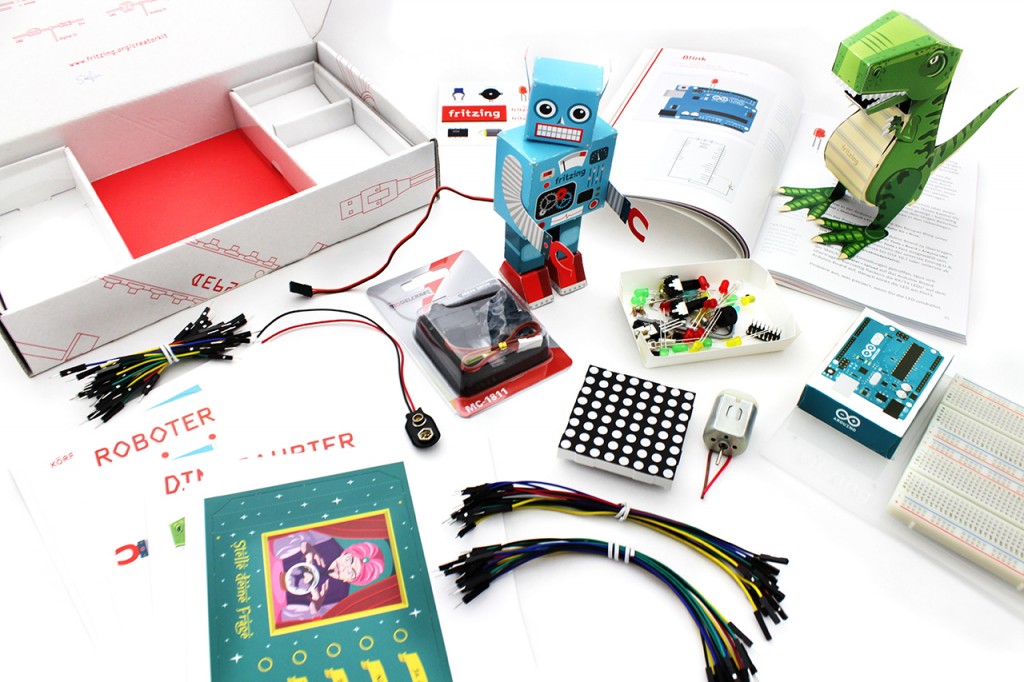
Spezielles Angebot für Schulen
Speziell für Schulen haben wir die Fritzing Teaching Bundles zusammengestellt. Sie enthalten neben einem Satz Kits inklusive Arduinos das umfangreiche Arduino-Kompendium von Erik Bartmann, sowie die Unterrichtspräsentation. Wir empfehlen das Kit für den Unterricht ab der 9. Klasse. Die Teaching Bundles erhalten Sie zum reduzierten Preis nur für Schulen und Universitäten bei uns im Shop: https://shop.fritzing.org/arduino-schule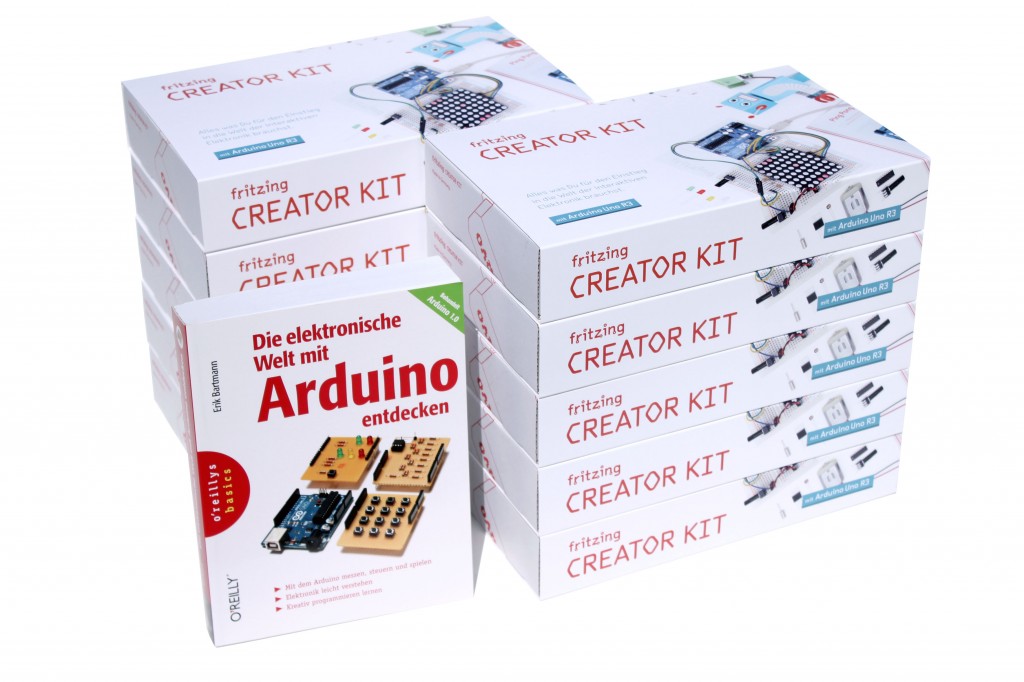
How can your kids learn with Arduino?
"It was the hardest thing I’ve ever done, and I’ve done some pretty difficult things, like military service." - Stefan, Fritzing Coordinator, on working with kids.
When you are little, you don’t want to wait. You want to cut up some paper and glue it to the moon. You want to get your hands dirty. You want to (with a little assistance, maybe) make a light blink, attach it to a CO2 sensor, put it inside a balloon full of helium, and send it into the sky. That way you can figure out how much CO2 those big cars are coughing out.
I had the chance to do some heavy learning over the weekend as a mentor for children’s workshops, so I saw kids’ impatience firsthand. Hackidemia organized the workshops during the Singularity University EU Summit in Budapest, with the goal of bringing the possibilities of complex technology to children. The Creator Kit has a similar goal, to bring Arduino and electronics to children. The topics are tough, though!
My main takeaway was that teaching kids can be more complex than the technology. Here I outline some of my issues and provide some tips that you can use while using the Creator Kit with your family.
Using the Creator Kit with Your Kids
During the Air Pollution Workshop, I saw that one of the main barriers to teaching youth was keeping their attention. If you asked me to explain something, chances were that I’d quickly slip into my natural tendency toward dry, theoretical, and factual information (in lots of detail). Long story short: that didn’t work so well with 10 year olds. I got this look:
And I noticed over at the next table the mentor Clément got these looks:
What was he doing differently? What can you do differently when you play with children and the Creator Kit?
2 things mainly: metaphors and questions.
Explain via Metaphors
So you want to get the idea of an Arduino across. Ok, how about forgetting about the pins for the time being, and instead making a diagram like this. Extra kudos if you make the diagram on the spot and say a couple of words about each piece along the way.
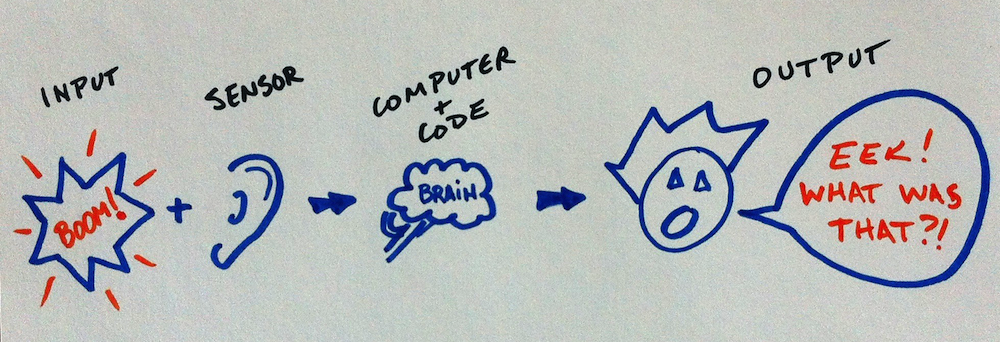
Engage via Questions
Imagine you are at a cocktail party. To learn about another guest, you probably wouldn’t say, “Tell me everything about you, ordered by year, and please do not stop talking for at least 45 minutes. I do not want the chance to add anything, discuss anything, or ask you any questions.” Nope - instead you would probably ask a series of questions, which lead you to an enjoyable exchange where the person felt like they could express themselves.
Let’s apply this to children. Put the tools in their hands and ask them questions about it. Let them ask you questions. When they answer your questions about the Creator Kit, they are learning by doing and answering.
Do you think there is more CO2 in the air at street level or at the top of a building? If you make it to Mars, what will you have to take with you from Earth? Oh, so you say you want to be a lawyer when you grow up? Well, ever consider being a lawyer for robots?
With the Creator Kit, you might use it with your children. You should use it with your children. Use these tips! Engage them in the kit, play with the content, and get creative. The Creator Kit is a perfect jumping off point, so now it’s your turn to take it to the next level and keep them engaged.
Hello [fritzing] world
Hello, Fritzing world. My name is Laura and I’m a creator / programmer and organizer living in Berlin. If I’m not planning a new project or talking with people about a whacky idea, then I’m probably thinking about one. I moved to Berlin about a year ago and got involved in open tech / rails girls / maker things when my friend and I started going to Everything together (yes, Everything). Workshops, meetups, tangentially related conferences, you name it. Johanna and I were there.
Johanna and I at Everything:
https://instagram.com/p/ZdE6QQGr-9/ https://instagram.com/p/ZvJy7omr6I/
This Fall we’re testing the new Fritzing Creator Kit. We’ve worked with Arduinos before, but this is our first foray into the Fritzing world. We’re going to try each project, try our own projects and document the process through this blog.
i.e., make things, break things and drink (lots of) coffee.
Since we’ll blog regularly in the next months, I asked Johanna a few questions to help you get to know us better. Follow the entire series, stay tuned on the Fritzing blog and follow us on Twitter: Laura Wadden and Johanna Santos Bassetti.
You have a degree in art, you're interested in agriculture, you've worked in product strategy at various startups, and you even picked strawberries while living on a Danish island. What got you involved in Fritzing?
Ever since I was a little girl I watched my dad solder things. And I knew that by soldering things he was making other things happen. At that point I didn’t really understand what computers were, but I liked the soldering process. And then when I understood what computers were, I got interested in how to make computers do stuff that serves you as a tool. I thought of them as potential translators of the physical world and imagined ways of using computers to measure how plants grow. But I didn’t know about sensors then.
So you thought about programming machines as a little girl? Awesome!
Exactly.
How did you get involved in Fritzing and Arduinos this time around?
I worked with Arduinos back in 2011 doing wearable Arduino work for a friend’s exhibition during Club Transmediale. He had a Lilypad, sensors and speakers that I sewed into a lab coat with metal string. I had to figure out a way to sew it so that none of the connections touched while the participants moved so it wouldn’t short-circuit.
How has the Berlin maker scene – Fritzing, Open Tech School, the workshops we’ve gone to, Hackidemia, the Kids Hackathon, etc. – influenced your involvement in Arduinos & Fritzing?
The project back in 2011 was really on the outskirts, but Arduinos stayed on my mind. Then all of a sudden it was much more accessible through these meetups. People were willing to share their knowledge and teach - that’s the first time I felt it was possible to work on my own projects.
What about those meetups inspired you?
The Open Tech School meetup was inspiring because there were tons of projects happening at the same time and so many different types of learning in self-organized groups. The diversity of approaches was titillating: There was a table of sound tinkerers! There was a wearables table! And a table of complete newbies!
I think seeing how collaborative, open and fluid the community was made me feel safe to try whatever I wanted and feel supported by other people.
And I inspired you too, right?!
Yes! When I started doing these projects with you – that’s when I noticed how well we work together. Our different learning complement each other. And I realized how much fun it is.
Do you have any goals with our Fritzing project this Fall? What are you trying to get out of it?
I want to test some ideas that I’ve kept locked in my brain vault for the last decade. With Fritzing, they are potentially doable now. I am excited to get to it!
Follow Laura Wadden and Johanna Santos Bassetti on Twitter and keep up with the Fritzing blog to find out what happens next in their learning adventure.



